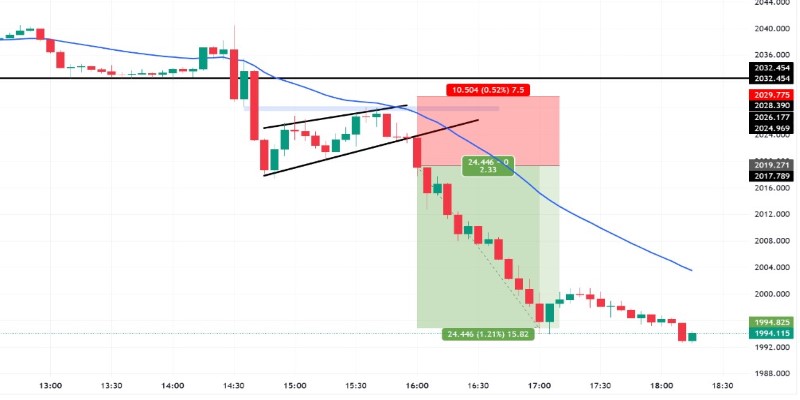In the world of financial markets, understanding market trends and making informed decisions can often feel like navigating a maze. The market moves in waves, influenced by countless factors that create patterns over varying periods. Multiple-time frame Analysis (MTFA) is a technique that provides traders with a more structured approach to navigating this complex environment.

By examining the same market through different time lensessuch as minutes, days, and even monthstraders can gain a deeper understanding of both short-term fluctuations and long-term trends. This method is particularly useful in enhancing trading strategies, as it helps traders align their decisions with the overall market direction, leading to more consistent and profitable outcomes.
The Basics of Multiple Time Frame Analysis
MTFA is built on the idea that markets operate in different cycles depending on the time frame you're looking at. A trend that seems strong on a 5-minute chart might be part of a minor pullback in the context of a weekly chart. By looking at multiple time frames, traders can place these smaller movements into the context of larger trends, which provides a more comprehensive view of the market's direction.
For example, consider a trader analyzing a stock. On a daily chart, the stock might show a clear uptrend, suggesting bullish behavior. However, when the same stock is viewed on a weekly chart, the trader might notice that it is approaching a significant resistance level that has held firm in previous attempts. This insight, gained through MTFA, can prevent the trader from entering a trade that might seem promising on a smaller time frame but is likely to fail due to larger time frame resistance.
Why Use Multiple Time Frame Analysis?
The primary benefit of using MTFA is the ability to confirm the validity of a trading signal across different time frames. A signal that aligns across multiple time frames carries more weight, reducing the likelihood of being misled by noise or false signals that might appear in a single time frame.

Moreover, MTFA provides a clearer picture of the market's overall structure. Short-term time frames can be noisy and may lead to impulsive decisions if analyzed in isolation. By adding longer time frames, traders can better understand whether a short-term movement is a part of a larger trend or just a temporary fluctuation. This reduces the chances of making decisions based on short-lived market movements that might reverse quickly.
Additionally, MTFA aids in better risk management. By aligning short-term trades with the overarching trend identified in longer time frames, traders can increase the probability of success. For instance, in a long-term uptrend, a trader might avoid shorting opportunities on a short-term chart, instead focusing on buying during pullbacks, which is likely to be more profitable in the context of the broader trend.
How to Implement Multiple Time Frame Analysis?
Implementing MTFA involves a systematic approach where traders examine the market through three primary time frames: long-term, medium-term, and short-term.
Long-Term Time Frame:
This is the foundation of your analysis. The long-term time frame helps identify the dominant trend in the market. For a day trader, this might be a daily or weekly chart, while for a swing trader, it could be a weekly or monthly chart. The goal here is to understand the overall market directionwhether it's bullish, bearish, or ranging.
Medium-Term Time Frame:
Once the long-term trend is established, the medium-term time frame is used to identify potential trade setups. This time frame shows the intermediate movements within the long-term trend. For instance, if the long-term trend is bullish, the medium-term chart helps you identify the best opportunities to enter a buy trade. For day traders, this time frame might be a 4-hour or daily chart.
Short-Term Time Frame:
The short-term time frame is used for precise entry and exit points. It captures the most recent market activity and helps traders time their trades more effectively. For instance, after identifying a trade setup on the medium-term chart, the short-term chart (such as a 15-minute or 1-hour chart) is used to pinpoint the exact moment to enter or exit the trade.

By using these three-time frames together, traders can build a strategy that is aligned with the market's broader trends while also being responsive to short-term changes. For example, if a trader identifies a bullish trend on the weekly chart, sees a pullback on the daily chart, and spots a bullish reversal pattern on the 1-hour chart, this confluence of signals across time frames offers a strong buy opportunity.
Challenges of Multiple Time Frame Analysis
While MTFA is a powerful tool, it's not without its challenges. One of the primary difficulties traders face is the potential for information overload. Analyzing multiple charts simultaneously can be overwhelming, especially for those new to trading. This can lead to "analysis paralysis," where a trader becomes so overwhelmed by the amount of information that they struggle to make decisions.
Another challenge is the potential for conflicting signals. Its not uncommon for different time frames to show conflicting information, making it difficult to decide on the appropriate course of action. For example, the long-term chart might indicate a strong uptrend, while the short-term chart shows a bearish reversal. In such cases, traders need to rely on their experience and judgment to determine which time frame takes precedence.
To overcome these challenges, traders must have a clear trading plan and set of rules for interpreting information from different time frames. This might include prioritizing the long-term trend or setting criteria for when to act on signals from the mediumor short-term charts.
Conclusion
Multiple Time Frame Analysis is a versatile and powerful tool that can significantly enhance a trader's decision-making process. By analyzing a market through different time frames, traders can gain a comprehensive understanding of market trends and movements, allowing them to make more informed and strategic decisions.
While MTFA does come with challenges, such as the potential for information overload and conflicting signals, these can be managed through a disciplined approach and a well-defined trading plan.




